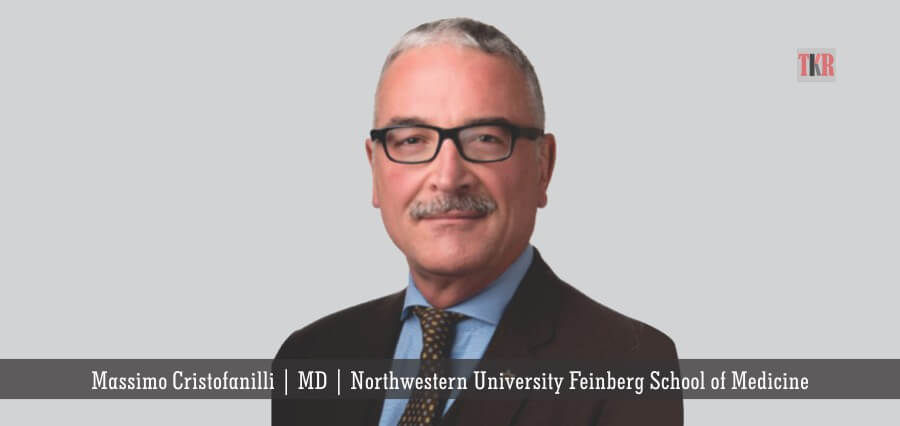Precision medicine may represent the most significant revolution in medicine in the last decade. Since the completion of the Human Genome Project, there has been a proliferation of studies aimed at the discovery of direct links between specific alterations in the individual DNA, also known as germline DNA, and diseases. The first goal is to identify potential therapeutic interventions aimed at replacing the defective gene or correcting the underlying defect causing the disease. The second, probably with much more downstream impact, is to identify individuals at risk and make them aware of the potential risk for future generations and, in some cases, correct the defect before it is transmitted.
The creation of the “perfectly healthy” individual without any genetic condition is coming closer to reality. In the meantime, the development of revolutionary interventions to treat progressive blindness due to a mutated gene (RPE65) and hemophilia represent some examples of such novel and impactful opportunities. At a more practical level, today pharmacogenomic testing is increasingly offered to patients to predict the efficacy and toxicity profile of commonly used drugs, allowing physicians to practice a safer and more precise therapeutic intervention.
Perhaps the area with the greatest potential impact for precision medicine is oncology, by definition a genetic disease. Many alterations in gene-controlling essential functions in cancer cells have already been discovered, but genetically-directed therapeutic interventions have been successful in only a minority of cases. Generally, these interventions are beneficial when the genetic change in the cancer cells is predominantly in one gene location in all the cells.
The most successful example of gene-directed therapy is represented by imatinib (Gleevec), FDA-approved for the treatment of chronic myeloid leukemia (CML) and gastrointestinal stromal tumors (GISTs). The clinical use of this agent also provided the opportunity to learn about resistance mechanisms to targeted therapies and the importance of monitoring the complex biology of cancer cells. Thus, we need to use multigene testing to be able to assess a more complex pathway analysis and to use the same testing in a longitudinal fashion.
The availability of sophisticated genomic analysis allowing investigators to evaluate large panels of cancer genes (somatic DNA alterations), sometimes associated with mRNA expression profiling using a small amount of tissue, is becoming an affordable reality for every tumor and available to every patient. Most of these tests perform parallel testing of germline (individual patient) DNA, giving a more complete understanding of the cancer-associated risk and potential therapies. Moreover, the use of blood-based genomic testing or liquid biopsy allows for a continuous monitoring of somatic (tumor) alterations over time, with the assumption that we can potentially predict benefit or response and use imaging studies more judiciously. The availability of these novel tests created a paradoxical situation in clinical practice. Many times oncologists are not prepared to deal with the complexity of the information provided, or do not have access to the identified therapeutic interventions. There is a new and pressing need to provide every physician with the tools and capability to rapidly access this expanded knowledge and translate it into more effective and individualized therapeutic options.
Large organizations have created infrastructures such as molecular tumor boards (MTBs) and have expanded their portfolio of clinical trials to include more targeted agents. Even in such a scenario, if we were to rapidly escalate the use of molecular diagnostics in every patient with advanced cancer and incorporate the use of liquid biopsy into everyday practice, the time and resources needed to analyze individual data over time would be overwhelming. This challenging and complex task requires the incorporation of artificial intelligence (AI) capabilities in the practice of oncology allowing rapid bioinformatics analysis of complex genetic codes and provides the list of cancer-related genomic abnormalities likely to drive individual tumors. The use of AI can drastically reduce the time to analyze the “current” scientific and clinical evidence available in the literature (sometimes thousands of manuscripts) to predict the pathway- or gene-direct agent likely to produce the best therapeutic benefit. In the near future, it will also incorporate structured clinical data from thousands of real cases, improving the predictive value of the structured reports.
The evaluation and treatment of a cancer patient is moving closer to the reality seen in science-fiction literature and movies. For every medical consultation, a treatment and prediction of benefit can only be accurately prepared after analysis of both tissue and blood samples for somatic and germline mutations. The simplified report of this complex analysis is performed with the support of both sophisticated laboratories supported by AI in a short time, and repeated over time in the blood to monitor response to treatment and potentially change it. Imaging studies will become less useful and the overwhelming data will furnish evidence for new models to develop drugs, ultimately reducing cost.
About the Author
Massimo Cristofanilli, MD, is a professor of medicine in hematology and oncology at Northwestern University Feinberg School of Medicine and associate director for translational research at the Robert H. Lurie Comprehensive Cancer Center of Northwestern University.
An expert in translational research and treatment of patients with inflammatory breast cancer, Dr. Cristofanilli has led the development of novel diagnostic and prognostic markers in primary and metastatic breast cancer. His research is focused on advancing a patient-centered, biology-driven model of cancer care, combining sophisticated tissue and blood-based molecular diagnostic technologies and innovative treatments.
Dr. Cristofanilli is also Director of Lurie Cancer Center OncoSET. Through an innovative three-step process – Sequence, Evaluate, Treat — the precision medicine program combines oncology with genomic sequencing to provide cutting-edge cancer care personalized for each patient. Another area of emphasis is educating physicians about emerging technologies and strategies for translating advances in precision medicine to their clinical practice.
Dr. Marcus D. Childress is dean of









